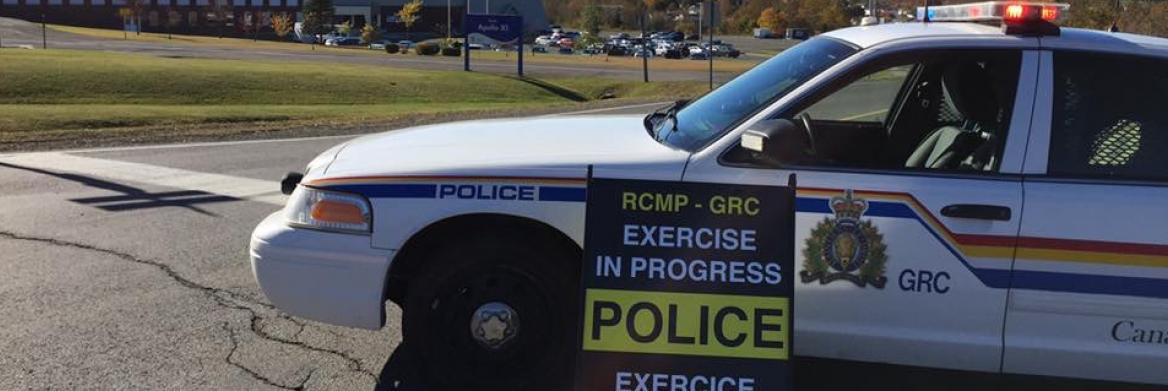Lockdown. Lockdown. Lockdown. This one word repeated three times sets an entire school in motion. Hallways are emptied, doors are locked and barricaded, lights are turned off, and students and teachers fall silent as they hide.
The fatal Columbine High School shooting in 1999 changed the way schools and police respond to an active shooter incident. Police recognized that a much faster response was needed.
"That was the initial major incident that we realized that we have to have a plan in place," says Julie Fraser with RCMP New Brunswick's Operational Readiness and Response Unit. "Now we have the SAFE (School Action for Emergencies) plan. We have to be proactive so we can be ready for emergencies, and react and respond in a more efficient way."
Lockdown activates the RCMP's SAFE plan, a computer database that gives first responders instant access to everything from school contacts, floor plans, aerial photos, maps, lockdown procedures and other site-specific information, including tactical considerations like where first responders can set up posts.
SAFE was launched nationally across the RCMP in September 2007. In 2010, when Fraser's unit was tasked with co-ordinating SAFE plans for New Brunswick, she wanted to promote the program by providing more awareness to front-line police officers.
"In order to make the SAFE plan more workable and meaningful, I decided to start conducting multi-agency SAFE exercises," says Fraser.
Reality-based training
The most recent such exercise was held on Oct. 19, 2016, at an empty high school in New Brunswick.
A man with a gun entered the school through the front doors and opened fire. This action triggered Yves Coulombe, principal of Polyvalente Roland-Pépin, to announce a lockdown and simulate a call to 911, activating the school's SAFE plan.
"Even though it was a training exercise, it felt real," says Sgt. René Labbe, who's in charge of operations at the RCMP detachment in Cambellton, N.B. "The emotion of the police officers ran very high."
With simulated firearms in hand, RCMP officers arrived on scene, ready to stop the threat using their Immediate Action Rapid Deployment (IARD) training.
Actors played injured victims, lying on the floor, and teachers participated in the classroom lockdown procedures. "They could hear everything that was going on — the shots being fired and actors screaming," says Coulombe.
Students didn't participate in the scenario as the goal of the exercise was to test the interoperability between front-line responders and partner agencies.
Practice makes perfect
Responding to a school shooting involves many players. So, in addition to the high school and the RCMP, the exercise also included the school district, local fire department, Ambulance New Brunswick, the City of Campbellton's Public Works, the regional hospital and the liaison Emergency Measures Organization.
Once the shooters were neutralized (there were two) and the building was pronounced cleared, the partners stepped in. Victims were rescued, triaged and taken to hospital.
The entire scenario, which simulated approximately the first 30 minutes of an incident, took about an hour from beginning to end, but planning it took three months. Besides co-ordinating the logistics, Fraser and Labbe also involved partner agencies from the beginning.
They held an orientation session and a tabletop exercise two weeks before the actual event to ensure all participants involved gained a mutual understanding of each other's roles and protocols.
And when the action came to an end, the participants were able to debrief and discuss each partner's role, how they responded and where they could improve.
"We ran this exercise to know if we're ready to answer this type of call and to prepare us should we ever have to answer this type of call," says Labbe. "The result was great. We know we still have some things to improve, but now we know what to work on."
While the high school runs a lockdown drill at the school with the students twice a year, Coulombe wanted to host the exercise to get an understanding of the SAFE plan and the front-line response.
"We have to make sure that the children and the staff in our school are safe from every threat," says Coulombe. "Now we feel like we're prepared because this experience made it real for us."
